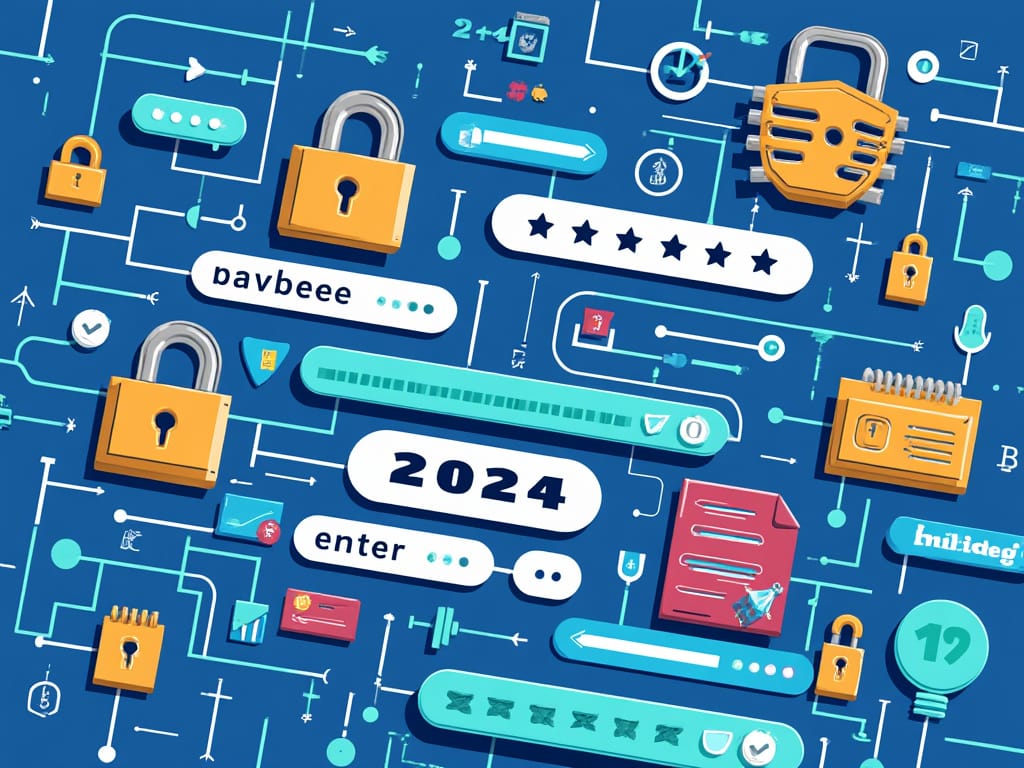NIST Password Guidelines 2024: A Game-Changer for Cybersecurity

Hey there, fellow digital citizens and cybersecurity enthusiasts! 👋 Grab your favorite beverage and settle in, because we're about to dive into some exciting news that's shaking up the world of password security. The National Institute of Standards and Technology (NIST) is in the process of updating its password guidelines for 2024, and trust me, this is something you'll want to pay attention to!
Out with the Old, In with the New
Remember the days when you had to change your password every 60 days, juggling between "Password1" and "Password2" like a frustrated circus performer? Well, those days are (thankfully) coming to an end. The NIST, in its infinite wisdom, has realized that these outdated practices are doing more harm than good.
The new guidelines, part of the Special Publication series SP 800-63 "Digital Identity Guidelines," are set to revolutionize how we think about password security. The 2024 version, specifically SP 800-63-4, is building on changes introduced in 2020 and adding even more user-friendly (and security-enhancing) recommendations.
What's New in NIST 2024?
Let's break down some of the key points from the new guidelines:
- Say Goodbye to Forced Password Changes: That's right, no more calendar reminders to change your password every two months. NIST recommends changing passwords only in two scenarios:
- After a breach or compromise
- Upon user request
- Minimum Length, Maximum Flexibility: Passwords should be a minimum of 8 characters long, but here's the kicker - they should allow for a maximum length of at least 64 characters. Time to bust out those favorite quotes or song lyrics!
- Character Variety is the Spice of Life: The guidelines encourage accepting all printing ASCII and Unicode characters, including spaces. Yes, you read that right - spaces are allowed! Your password can now be a whole sentence if you want.
- No More Complexity Rules: Remember those frustrating requirements for uppercase, lowercase, numbers, and special characters? They're gone! NIST explicitly states that verifiers should NOT impose composition rules.
- Knowledge-Based Authentication is Out: No more "What was the name of your first pet?" questions. These are considered insecure and are no longer recommended.
Why These Changes Matter
You might be wondering, "Why should I care about some government agency's password recommendations?" Well, my friend, these guidelines are the gold standard for password security. They influence how organizations across the globe approach user authentication.
Here's why these changes are a big deal:
- Improved User Experience: Let's face it, constantly changing passwords is a pain. By removing this requirement, users are more likely to create strong, memorable passwords.
- Enhanced Security: Counterintuitively, frequent password changes often lead to weaker passwords. Users tend to make minor modifications to their existing passwords, making them easier to crack.
- Focus on What Really Matters: Instead of arbitrary rules, the focus is now on creating longer, more diverse passwords that are genuinely secure.
- Alignment with Human Behavior: Allowing spaces and longer passwords enables users to create passphrases, which are both easier to remember and harder to crack.
The Psychology of Passwords
Let's talk about the elephant in the room - user behavior. Cybersecurity researchers and ethical hackers have long known that strict password rules often backfire. When forced to change passwords frequently or adhere to complex rules, users tend to fall into predictable patterns.
For example, when required to use a capital letter, number, and special character, many users default to something like "Password1!" And when forced to change it? You guessed it - "Password2!" emerges.
By allowing longer passwords with spaces, NIST is encouraging users to create passphrases. These could be memorable sentences or strings of words that are much harder for attackers to guess or crack.
What This Means for Organizations
If you're an IT administrator or in charge of security policies, it's time to take note. Here are some key takeaways:
- Review Your Password Policies: If you're still enforcing periodic password changes or complex composition rules, it's time for an update.
- Educate Your Users: Teach them about the benefits of longer passphrases and how to create strong, memorable passwords.
- Implement Multi-Factor Authentication: While not directly related to these password guidelines, MFA remains a critical security measure.
- Stay Updated: Keep an eye on the final release of these guidelines and any subsequent updates.
The Future of Authentication
While these password guidelines are a significant step forward, they're just one part of the broader authentication landscape. NIST also mentions phish-resistant methods, aligning with industry trends towards more secure authentication methods.
For instance, Microsoft is set to disable Legacy Authentication across all free accounts and tenancies next month, pushing users towards more secure modern authentication methods.
Wrapping Up: A Call to Action
As we move into this new era of password security, it's crucial that we spread the word. Share these updated guidelines with your colleagues, friends, and family. Educate your organization about the benefits of these new practices.
Remember, cybersecurity is a collective effort. By adopting these more user-friendly and secure password practices, we're not just making our individual accounts safer - we're strengthening the overall security posture of the digital world.
So, let's bid farewell to "Password1!" and embrace the era of "I love strong coffee and secure passwords!" Your future self (and your IT department) will thank you.
Stay secure, stay informed, and keep spreading the good word of cybersecurity! 🛡️💻